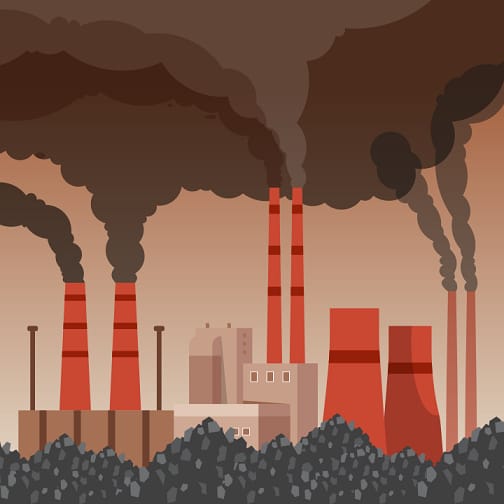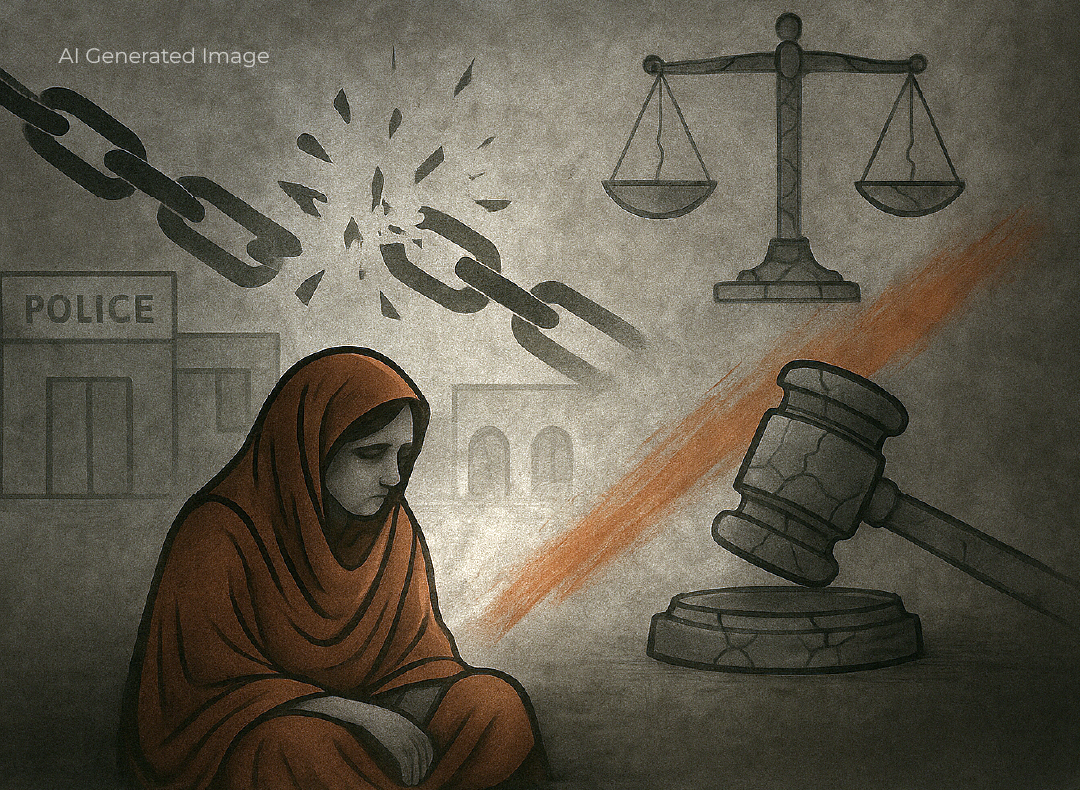Officials at the head office of Punjab’s Environment Protection Department in Lahore do not even know the source of toxic and polluting carbon dioxide gas excessively found in the province’s ambient air. They, in fact, admit that they do not have the equipment required for finding out the sources of its emission and gauging its level in the atmosphere.
The Centre for Research on Clean Energy and Air (CREA), a European think tank on energy and air pollution, on the other hand, has revealed in its report published on July 30th, 2021 that nine out of every 10 units of carbon dioxide emitted into Pakistan’s atmosphere in 2019-20 came from the use of coal, natural gas and oil. Alarmingly, 8.1 of these nine units originated from the burning of coal alone.
Although the government collects no data to figure out the amount of coal consumed by different sectors of industry, it is widely believed that its largest amount is used in coal-fired power generation. The statistics released by CREA, however, show that coal-fired power plants emitted only 15 per cent of the total carbon dioxide gas in 2019-20. Cement factories, on the other hand, emitted as much as 45 per cent of this gas in the same period.
Given the fact that no single government department has ever compiled data pertaining to carbon dioxide emission, CREA researchers gleaned this data from different sources such as monthly reports published by various industrial units and annual reviews carried out by the National Electric Power Regulatory Authority (NEPRA) that regulates the power sector.
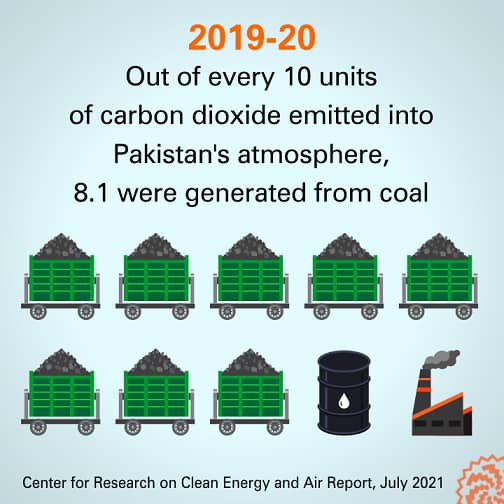
The absence of any relevant data at Punjab’s Environment Protection Department is all too obvious. Even when Imran Mayo, one of its assistant directors, explains that his department prepares a detailed report before approving the establishment of a cement factory to ensure that its emissions and effluents do not cause pollution, it does not know how much pollution is being caused by the use of coal in cement factories. It, in fact, does not even ask the factories as to how much coal they use and for what purpose.
Mayo says one of the main reasons for not asking these questions is that it is not solely the job of the Environmental Protection Department. After a cement factory starts operating, he says, Punjab’s Mines and Minerals Department and the provincial ministry of industries are also responsible to prevent the spread of environmental pollution from it. Yet an official of the former department says it “does not have any information or data on how much coal is being used in cement factories and to what end”.
Cement factories usually use coal for two purposes: to melt limestone (CaCO3) in order to convert it into clinker; and to generate power to run machinery. Both these processes release carbon dioxide but the International Energy Agency, an inter-governmental organisation based in Paris, says the technology to generate power through coal-fired plants has improved significantly in recent years which has considerably reduced carbon dioxide’s emission during this process. But the technology used in making clinker is still extremely detrimental to the environment. This explains why 60 per cent of all the carbon dioxide emitted from cement factories is produced during this process.
Coal and cement: a deadly mixture
Coal has been used in cement production since it was first manufactured by an English builder Joseph Aspdin in 1824. But cement factories across the world, including in Pakistan, switched to gas and oil by the mid-1950s.
According to the International Cement Review, a research magazine, most of the factories were using furnace oil as fuel in 1955-1970. Cement factories in Pakistan, during that period, started using locally-available natural gas because its price was much lower than that of furnace oil.
When the Arab members of the Organization of Petroleum Exporting Countries (OPEC) imposed an oil embargo against some Western countries in 1973, cement factories in most parts of the world shifted back to using coal because of the inflated furnace oil prices. In Pakistan, however, most cement factories continued running on natural gas.
Haneea Isaad, who carries out research on policy changes in energy sector for a non-government organization, Rural Development Policy Institute, says sufficient proofs exist -- the lack of conclusive documentary evidence notwithstanding -- to establish that “cement industry in Pakistan replaced natural gas with coal as fuel in 2001-02.” The reason for this change, according to her, was the rise in natural gas prices at that time.
An editorial published in daily Dawn on October 7th, 2002 also confirms this. It states that “during the past one year [2001] we find a dramatic change in this trend due to economic reasons. Now, most of factories have started using local coal as fuel.”
But the government did not take any concrete steps to cope with the environmental effects of running cement factories on coal. It neither purchased equipment to gauge the environmental impact of carbon dioxide emissions from the use of coal in industrial activities nor did it pass any laws to prevent it.
Zain Moulvi also agrees with Isaad.
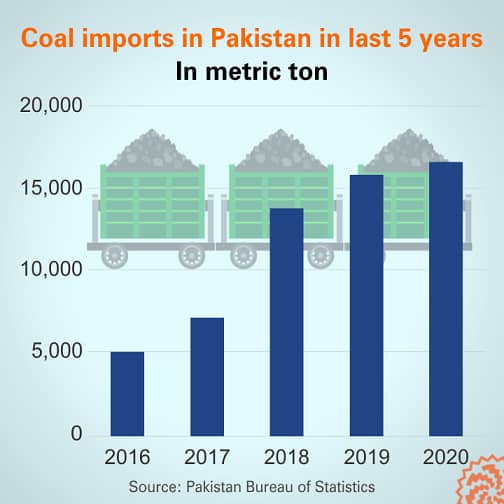
A lawyer by profession, he is affiliated with a non-government organization, Alternative Law Collective, and regularly reviews global – as well as Pakistani -- rules and regulations for the prevention of environmental pollution. Most countries, according to him, have enacted laws to ensure that carbon dioxide emitted from cement production and its harmful effects do not exceed a certain limit. “Some countries are also trying to reduce these emissions by imposing taxes on industrial enterprises,” he says.
The situation in Pakistan is altogether different.
Moulvi says there is no law here to measure the pollution caused by carbon dioxide emitted from coal-fired factories and by coal ash. On the contrary, he says, the government is taking steps that are further encouraging the consumption of coal in various industries.
Incentivising coal consumptions
Some cement factories not only burn coal to make cement but they also generate electricity from coal and then sell it to the government. According to the National Power Regulatory Authority (NEPRA), a 40-megawatt coal-fired power plant is currently operating at the Maple Leaf Cement Factory and a 30-megawatt coal-fired power plant is running at the DG Khan Cement Factory. A 25-megawatt coal-fired plant is under construction at the Kohat Cement Factory too.
Prime Minister Imran Khan has now announced that Pakistan will not allow the construction of any new coal-fired power generating projects in order to avoid the consequence of rapid climate change. The question that still lingers, however, is: will the government take any tangible actions to curb the emission of pollutants caused by the use of coal in cement factories?
Nauman Dawar Butt, the co-author of the CREA report mentioned above and a researcher on environmental pollution, sees little, if any, chances of such actions being taken. Instead, he says, the government has incentivised cement and construction sectors by giving them tax breaks and earmarking 30 billion rupees in subsidy for them under the Naya Pakistan Housing Scheme. “These incentives have given a further boost to coal consumption, let alone reducing it,” he says.
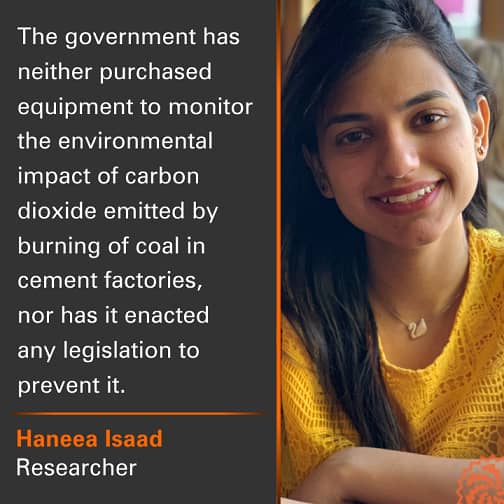
Data released recently by Pakistan Bureau of Statistics verifies this. It states that the annual consumption of coal in cement industry is on a constant rise. For instance, the import of coal by cement factories registered a five per cent increase in fiscal year 2020-21 as compared to the previous year.
Similarly, International Cement Review says -- in the wake of incentives the government offered to the construction industry in 2020 -- Punjab’s Mines and Minerals Department has not just lifted a ban, imposed five years ago, on digging new coal mine. It has also announced additional incentives for cement industry for the mining of its raw materials including coal. The magazine claims that at least 26 applications have been filed with the department to take advantage of these incentives.
It is because of these incentives that the All-Pakistan Cement Manufacturers Association announced in May this year that the annual production of cement in the country will be increased by 30 million tons in the next few years -- from 69 million tons to 99 million tons.
“Increase in coal mining, coupled with expansion of coal-fired machinery in cement factories, and increase in coal import substantiates the assumption that the share of cement factories in carbon dioxide’s emission will further swell in the near future,” says Butt while commenting on this situation.
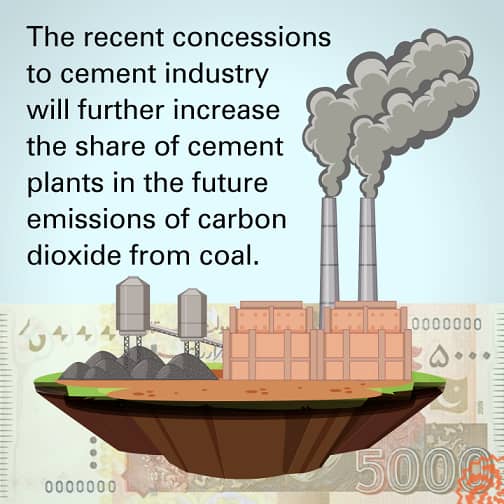
Experts, therefore, foresee a massive increase in the amount of carbon dioxide in Pakistan’s environment in the coming years.
This is extremely worrying for Dr Sanval Nasim who teaches at the Lahore University of Management Sciences and also does research on air pollution. He fears rising carbon dioxide emissions may lead to some serious climate changes in Pakistan, including weather fluctuations, deadly heatwaves and devastating floods caused by unseasonal rains.
“If urgent steps are not taken, these changes will have a severe negative impact not only on Pakistan’s economy but also on its human and natural resources,” he warns.
Published on 12 Nov 2021
